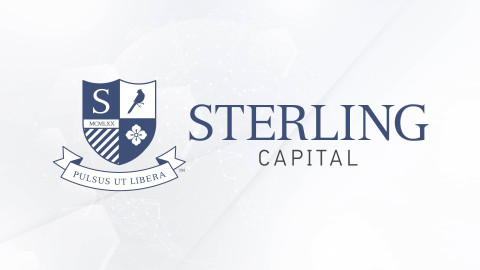Overview
C
Shares
SCCNX
Inception
Date
02.01.2013
Investment
Min.
$1,000
Subsequent
Investment Min.1
N/A
Max. Up Front
Sales Charge
N/A
Max. Deferred
Sales Charge
1%
1If subsequent investments are made as part of an AIP, the minimum is $25.
Philosophy & Process
In managing the fund, the portfolio management team employs a multi-faceted approach to generate excess return and uses a combination of top-down and bottom-up analysis, quantitative vs. qualitative analysis and fundamentals vs. valuation. There is a strong emphasis on risk management and an adherence to certain core investment beliefs:
- "If you cannot measure it, you cannot manage it."
- Avoid unintended exposures
- Average duration around 3 to 7 years with focus on high quality and risk management
- Participate in longer term trends - don't buy on short-term trends or try to time what is going on in the market
- Attempts to achieve risk-adjusted performance over time
Investment Considerations
The fund is subject to the same risks as the underlying bonds in the portfolio such as credit, call and interest rate risk. As interest rates rise the value of bond prices will decline. The fund may invest in more aggressive investments such as foreign securities which may expose the fund to currency and exchange rate fluctuations; derivatives (futures and swaps); and high yield debt (also known as junk bonds) all of which may cause greater volatility and less liquidity. Derivatives may be more sensitive to changes in market conditions and may amplify risks.
| Term | Class A Shares | Class C Shares | Class I Shares | Class R6 Shares |
|---|---|---|---|---|
| Ticker | SCCMX | SCCNX | SCCPX | STRFX |
| Inception Date | 02.01.2013 | 02.01.2013 | 02.01.2013 | 02.01.2022 |
| Investment Min. | $1,000 | $1,000 | $1,000,000 | N/A |
| Subsequent Investment Min.2 | N/A | N/A | N/A | N/A |
| Max. Up Front Sales Charge | 2% | N/A | N/A | N/A |
| Max. Deferred Sales Charge | N/A | 1% | N/A | N/A |
2If subsequent investments are made as part of an AIP, the minimum is $25.
Performance
| Term | QTR | YTD | 1 Year | 3 Years | 5 Years | 10 Years | Since Inception |
|---|---|---|---|---|---|---|---|
| A Shares with 2.00% Sales Charge | -3.21% | -5.09% | 0.01% | -7.56% | -2.55% | 0.18% | 1.35% |
| A Shares without Sales Charge | -1.29% | -3.13% | 2.00% | -6.92% | -2.16% | 0.38% | 1.51% |
| Institutional Shares | -1.23% | -3.02% | 2.25% | -6.70% | -1.94% | 0.63% | 1.72% |
| Lipper Corp Debt BBB Rated Median | 0.12% | -0.05% | 4.90% | -3.06% | 0.61% | 2.20% | N/A |
The gross expense ratios for Class A, C and I Shares are 0.95%, 1.70% and 0.70%, respectively. The net expense ratios for Class A, C, and I Shares are 0.91%, 1.66% and 0.66%, respectively.
The Advisor has contractually agreed to limit certain fees paid by the Fund from February 1, 2021 through January 31, 2022. Performance would have been lower without limitations in effect.
Past performance does not guarantee future results. The performance data quoted represents past performance and current returns may be lower or higher. The investment return and principal value of an investment will fluctuate so that an investor's shares, when redeemed, may be worth more or less than the original cost. To obtain performance information current to the most recent month end, please visit the performance summary.
The performance of the Corporate Fund reflects the deduction of fees for value-added services associated with a mutual fund, such as investment management and fund accounting fees. The inception date for Class A Shares is 02.01.2013. The inception date for Class C Shares is 02.01.2013. The inception date for Class Inst'l Shares is 02.01.2013. The inception date for Class R6 Shares is 02.01.2022. Performance for Class A Shares, Class C Shares and Institutional Shares for periods prior to inception is based on performance of Class S Shares of the Fund which were re-designated as Institutional Shares as of February 1, 2013. Class A Shares, Class C Shares and Institutional Shares of the Fund would have substantially similar performance because the Shares are invested in the same portfolio of securities and the performance would differ only to the extent that the Classes have different expenses. The performance shown reflects the reinvestment of all dividend and capital gains distributions.
Characteristics
Quality Breakdown as of 06.30.2024
Credit quality ratings using Moody's rating symbols reflect the credit quality of the underlying bonds in the fund portfolio and not of the Fund itself. Moody's assigns a range of ratings from AAA being the highest quality to C being the lowest rated class of bonds. Securities not rated by Moody's may be rated by S&P, Fitch or if no agency rating is available, the Fund will assign a rating of not rated. Bond quality ratings are subject to change.
| Name | Value |
|---|---|
| 0-2 Yr. | 0.07 |
| 2-4 Yr. | 0.78 |
| 4-6 Yr. | 0.92 |
| 6-8 Yr. | 2.98 |
| 8-10 Yr. | 10.64 |
| 10-12Yr. | 18.68 |
| 12-14 Yr. | 30.72 |
| 14-16 Yr. | 28.18 |
| 16-18 Yr. | 4.34 |
| 18+ Yr. | 2.69 |
Current and future portfolio holdings are subject to change and risk. Based on Market Value of securities.
| Name | Value |
|---|---|
| Number of Holdings | 368 |
| Average Life | 22.25 Years |
| Effective Duration | 12.68 Years |
| Annual Turnover | 26% |
| Composition | Fund | Index |
|---|---|---|
| Corporate | 95.6% | 100.0% |
| Financial Institutions | 20.0% | 16.6% |
| Industrial | 60.7% | 70.3% |
| Utility | 14.9% | 13.1% |
| Government Related | 0.1% | 0.0% |
| Agency | 0.1% | 0.0% |
| Securitized | 0.3% | 0.0% |
| CMBS | 0.3% | 0.0% |
| Treasury | 2.8% | 0.0% |
| Treasury | 2.8% | 0.0% |
| Cash | 1.1% | 0.0% |
| Cash | 1.1% | 0.0% |
| # | Company Name | Value |
|---|---|---|
| 1 | U.S. Treasury 2.0% 15-Aug-2051 | 1.23% |
| 2 | U.S. Treasury 2.0% 15-Nov-2041 | 1.17% |
| 3 | JPMorgan Chase & Co. 3.109% 22-Apr-2041 | 0.83% |
| 4 | AT&T Inc. 3.85% 01-Jun-2060 | 0.79% |
| 5 | Wells Fargo & Co. 5.375% 02-Nov-2043 | 0.75% |
| 6 | Anheuser-Busch Co., LLC 4.9% 01-Feb-2046 | 0.69% |
| 7 | UnitedHealth Group Inc. 3.5% 15-Aug-2039 | 0.68% |
| 8 | Bank of America Corp. 2.676% 19-Jun-2041 | 0.66% |
| 9 | AT&T Inc. 4.5% 15-May-2035 | 0.61% |
| 10 | AT&T Inc. 3.65% 15-Sep-2059 | 0.60% |
Current and future portfolio holdings are subject to change and risk. Based on Market Value of securities.
Growth of $10,000 as of 06.30.2024
The Growth of $10,000 is hypothetical based upon the performance of net A Shares at NAV for the period ended 06.30.2024. It includes the reinvestment of dividends and capital gains.
Distribution
| Month | Class A Shares | Class C Shares | Class Inst'l Shares | Class R6 Shares |
|---|---|---|---|---|
| June 2024 | $0.0256 | $0.0210 | $0.0270 | $0.0276 |
| May 2024 | $0.0266 | $0.0219 | $0.0280 | $0.0286 |
| April 2024 | $0.0261 | $0.0220 | $0.0274 | $0.0280 |
| March 2024 | $0.0255 | $0.0209 | $0.0269 | $0.0276 |
| February 2024 | $0.0237 | $0.0191 | $0.0251 | $0.0257 |
| January 2024 | $0.0253 | $0.0204 | $0.0267 | $0.0273 |
| December 2023 | $0.0253 | $0.0207 | $0.0268 | $0.0274 |
| November 2023 | $0.0247 | $0.0206 | $0.0260 | $0.0265 |
| October 2023 | $0.0256 | $0.0215 | $0.0268 | $0.0273 |
| September 2023 | $0.0242 | $0.0200 | $0.0256 | $0.0261 |
| August 2023 | $0.0248 | $0.0206 | $0.0262 | $0.0268 |
| July 2023 | $0.0247 | $0.0205 | $0.0262 | $0.0267 |
| Share Class | Without Waivers | With Waivers |
|---|---|---|
| Class A | 4.81% | 4.90% |
| Class C | 4.23% | 4.20% |
| Class I | 5.17% | 5.25% |
| Class R6 | 5.17% | 5.18% |
Long Duration Corporate Bond Fund
Materials
Fixed Income Funds
Insights
Contact
Learn more about Sterling Capital solutions and services.








